“Paper Bullets – the expanded version” at Neurotitan Gallery in Berlin, Germany
- Published
- in "The Process is the Product", all, Berlin, Paper bullets, the faith of graffiti
In the summer of 2019, I was given the opportunity to present an expanded version of my Paper Bullets exhibition at the acclaimed Neurotitan Gallery in Berlin, Germany. Oliver Baudach, the director of Hatch Kingdom Sticker Museum, was the driving force that made the project possible. It was an enormous undertaking, in that for the first time I drew from my entire collection of thousands of new, unused, historical and contemporary political stickers from around the world.

Neurotitan is a non-commercial, alternative art gallery that features urban art. Housed in the Haus Schwarzenberg in Mitte, the gallery dates back to 1995. The entrance to the gallery is located away from the street, and the walls leading up to it are covered with painted murals, wheatpastes, stencils, yarn bombs, and stickers. Every public street art tour in Berlin stops here to see the ever-changing outdoor displays and the rotating exhibitions inside. I knew when I first saw the space in the mid-2000s that I wanted to show my stickers there, and my dream came true this year.

Courtyard entrance 
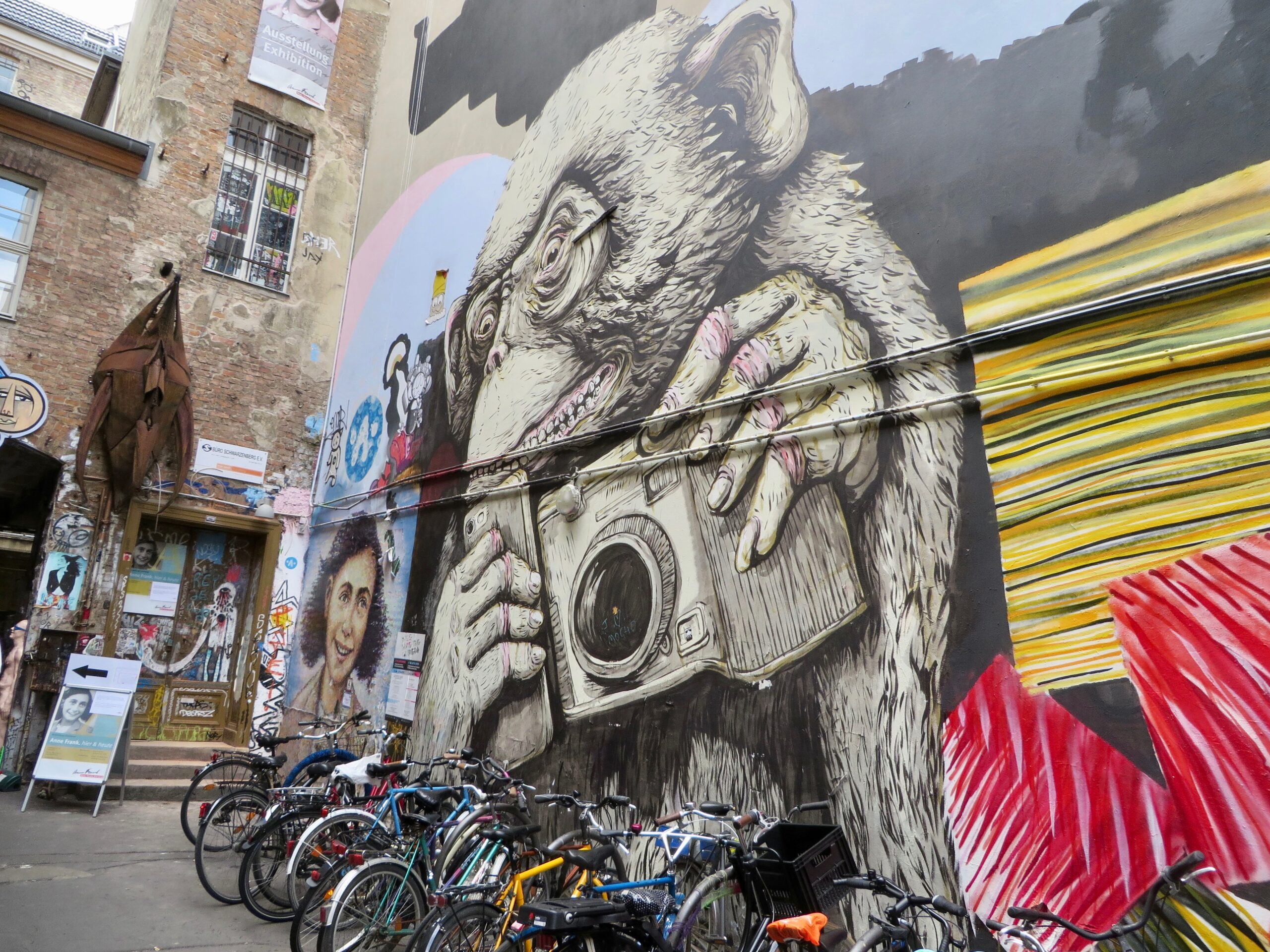
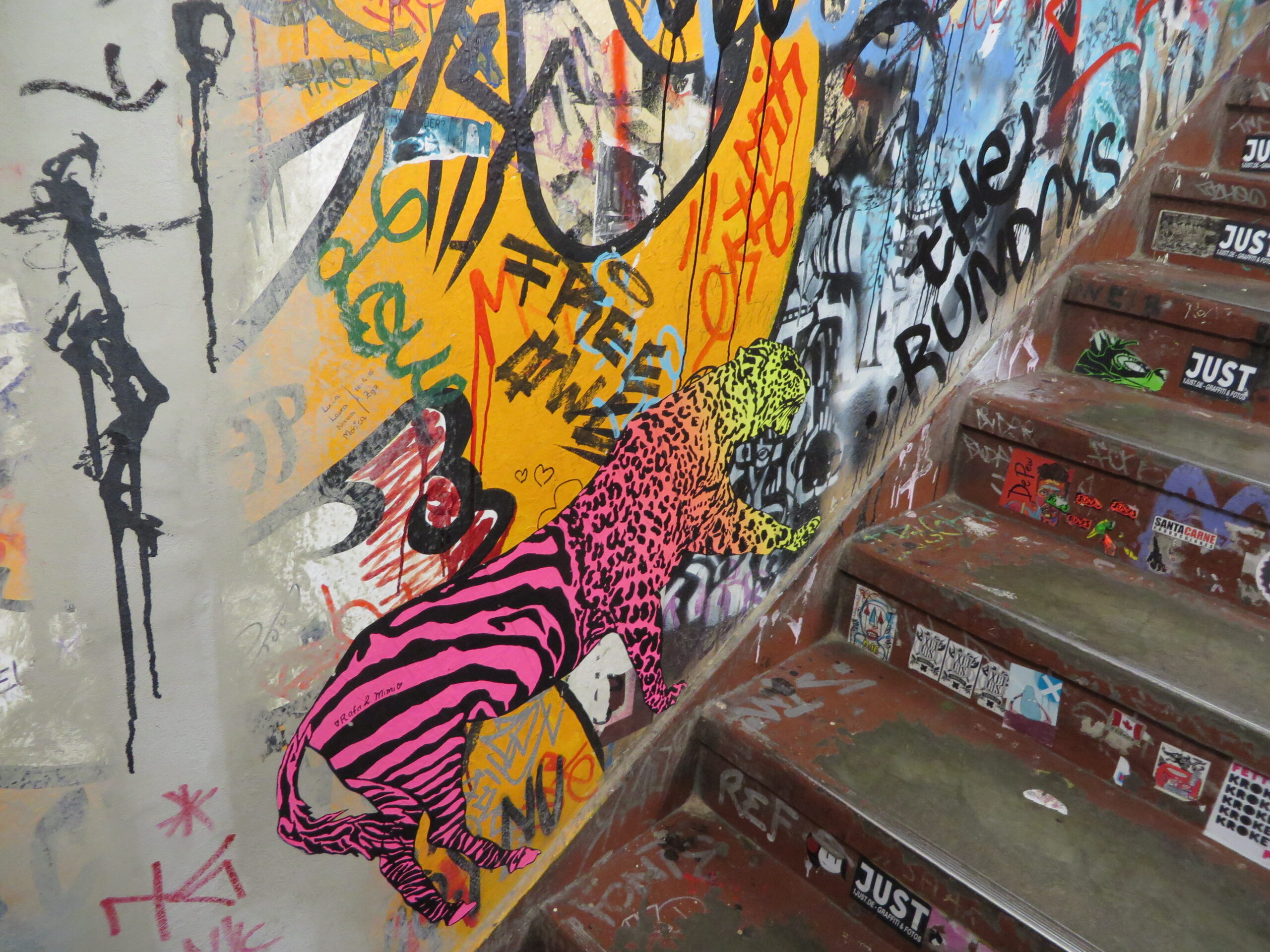
Exhibition planning
Even though for the past 15+ years, I’ve scanned over 11,000 stickers (which you can view in Flickr albums), I started scanning any other un-scanned stickers in January 2019 to make sure I had image files for everything that would go into the show. The photo below shows notes related to scanning several hundreds of additional stickers this year.
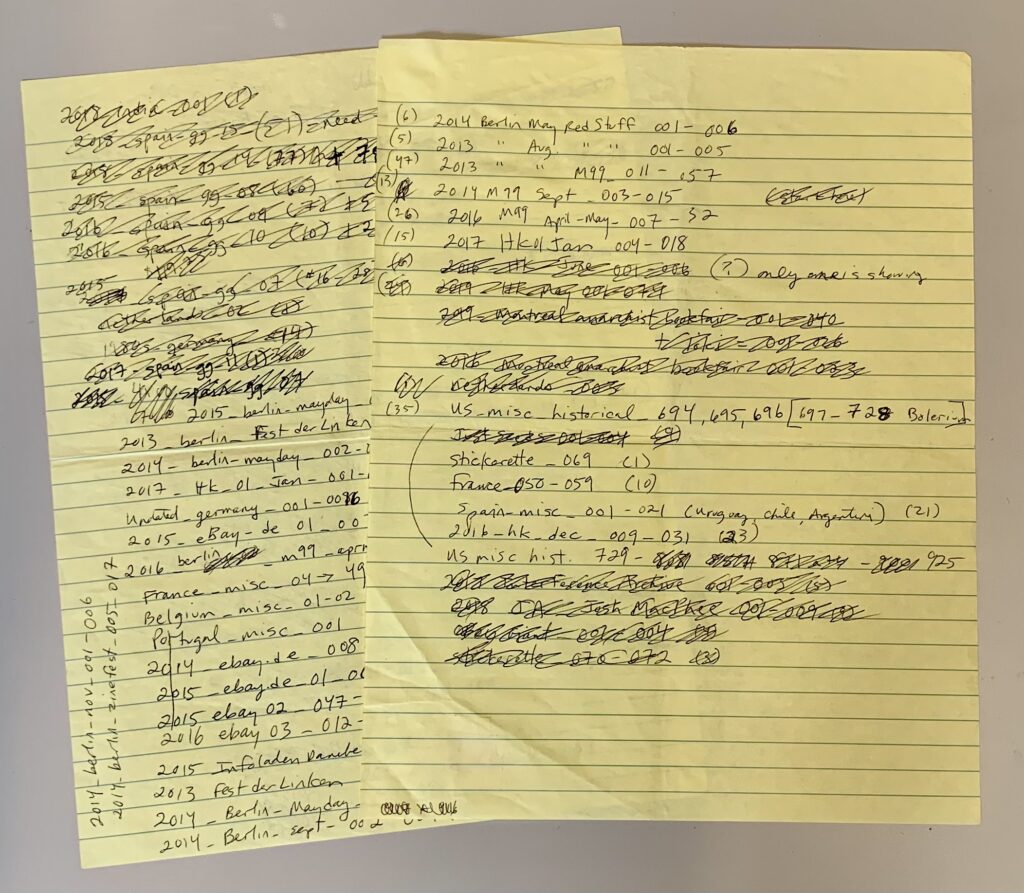
I’m now in the process of typing this info into my “simple spreadsheet” (now 15 pages long). The lines in red indicate the scanning done this year and the image files that will need cropping and color adjusting. Yipes. It will be useful for when I go to publish a book, though!
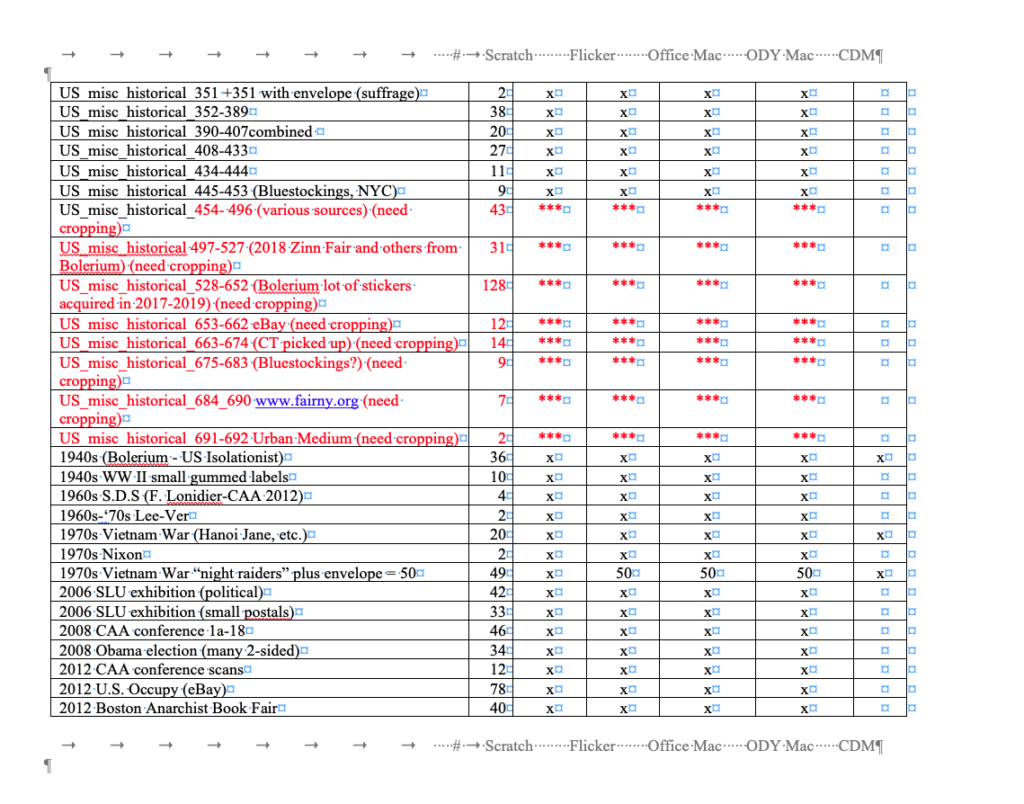
In early May 2019, I started making selections for the show. Since classes at St. Lawrence University were over, I was able to use the printmaking studio there to set everything out and see all of the groupings side by side. I asked SLU faculty and students in Modern Languages and Global Studies for their input on my selections to make sure I had organized everything correctly, especially for stickers from countries other than the US and Canada. A contact in Spain (GG) provided valuable input and caught a few mistakes (i.e., right-wing groups often appropriate left-wing images and text, which tripped me up a few times with the Spanish stickers).
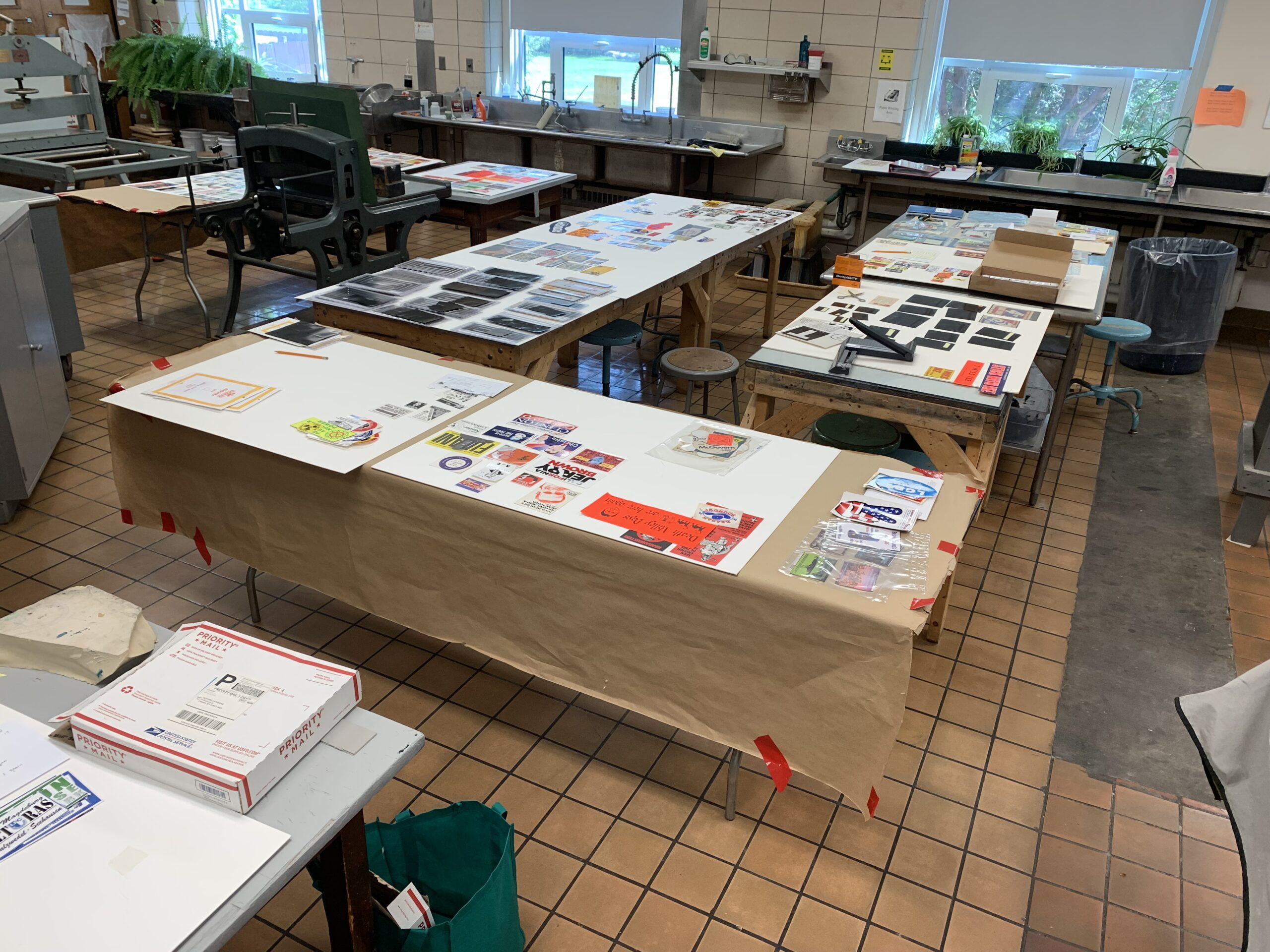
Oli also came to St. Lawrence later that month to put together the SHE SLAPS traveling show, and we had enough time during his visit for him to go through my selections. He speaks Spanish and German and helped with stickers from those countries, caught a few dupes, and made some other recommendations.
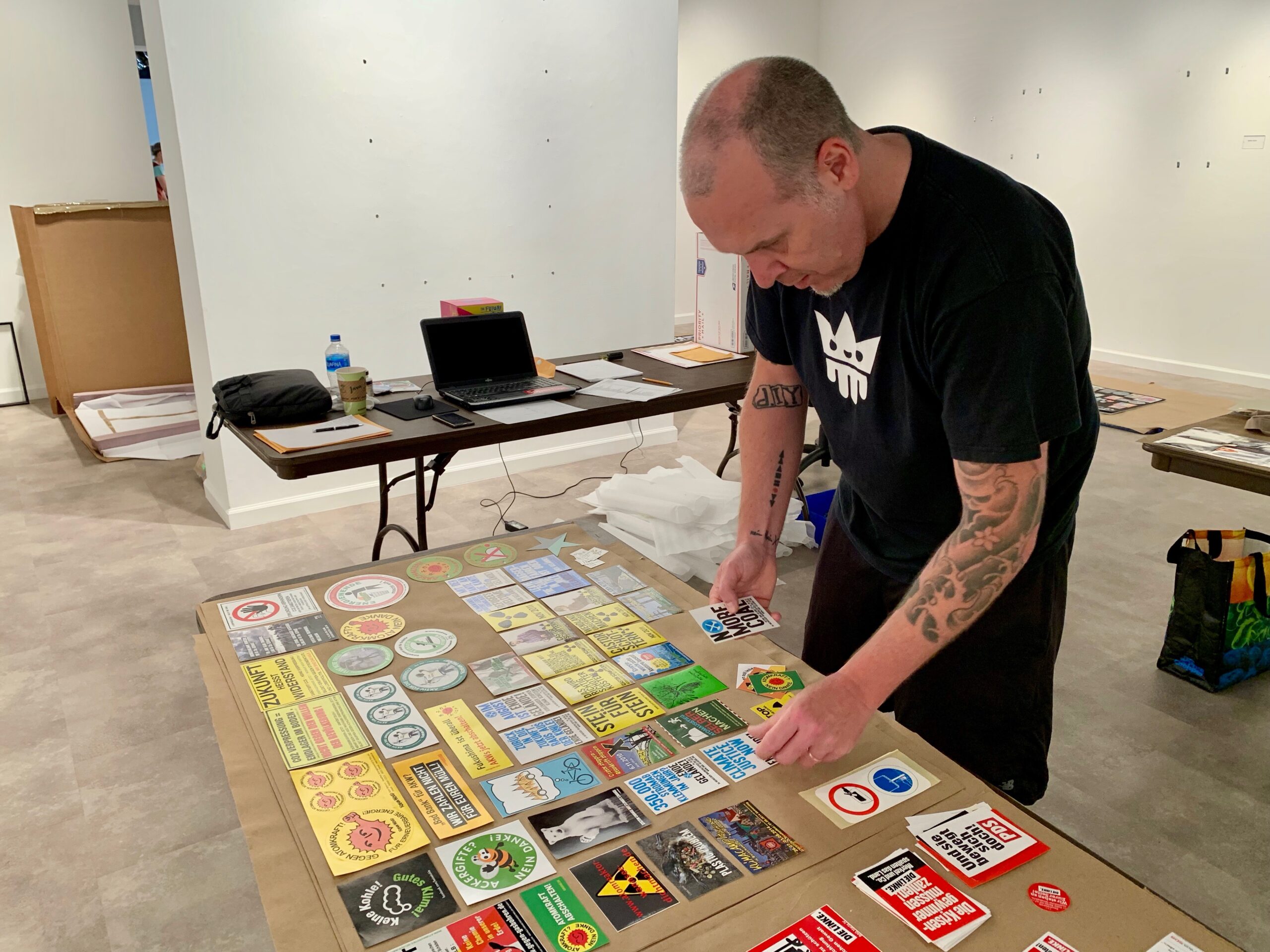
We ended up with over 2,200 stickers from over a dozen countries grouped on 54 sticker boards by geographic location, date, and subject.
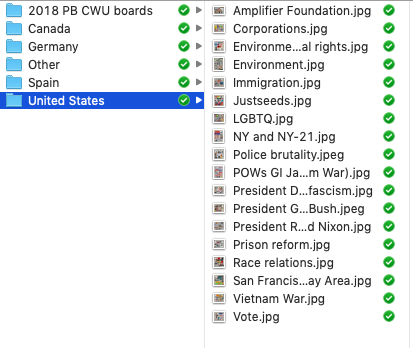
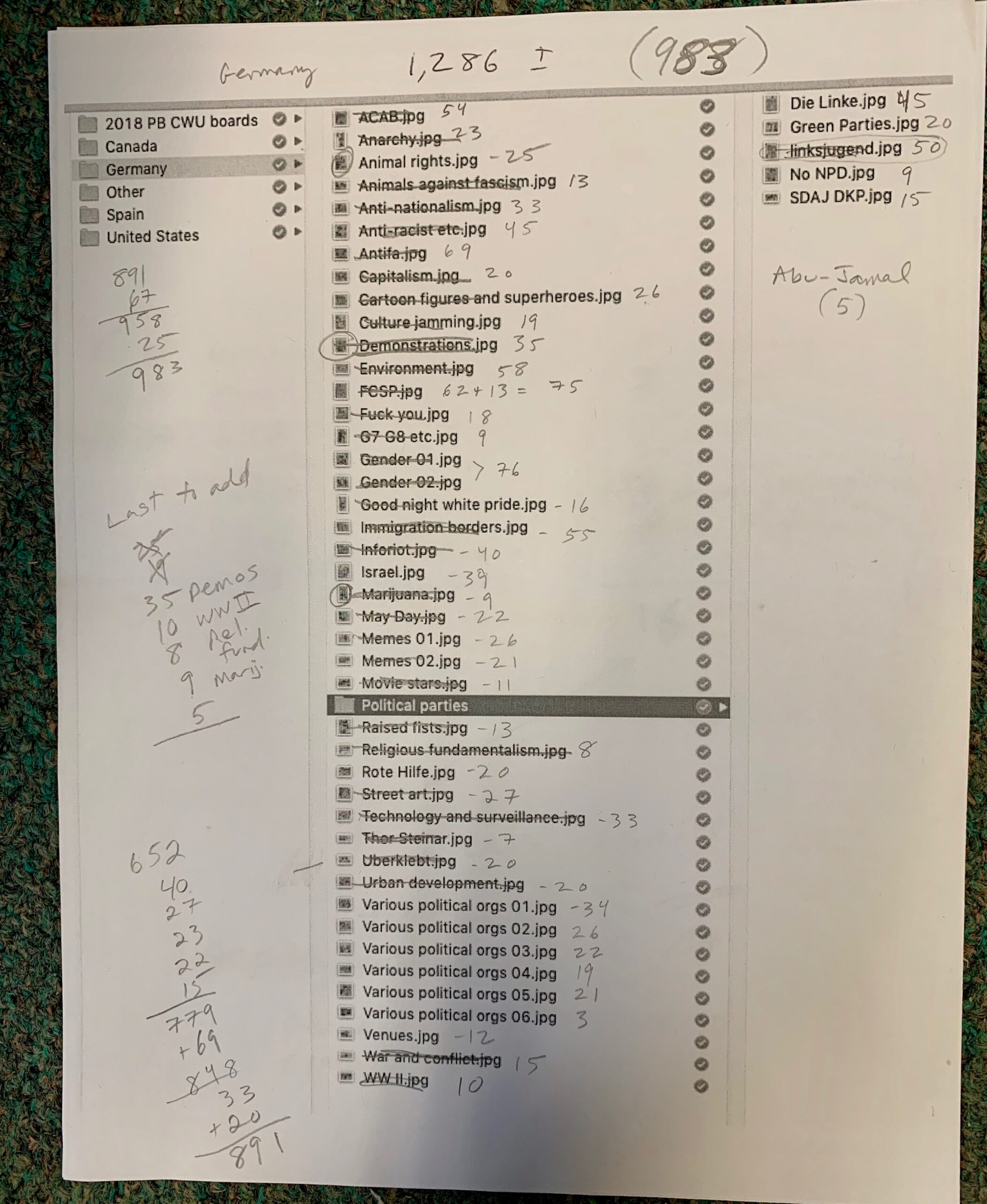
I went to Berlin at the end of July to frame the sticker boards with Oli, and Neurotitan staff installed the show. The gallery itself is huge with about 285 running feet of wall space and lots of big windows for natural light.
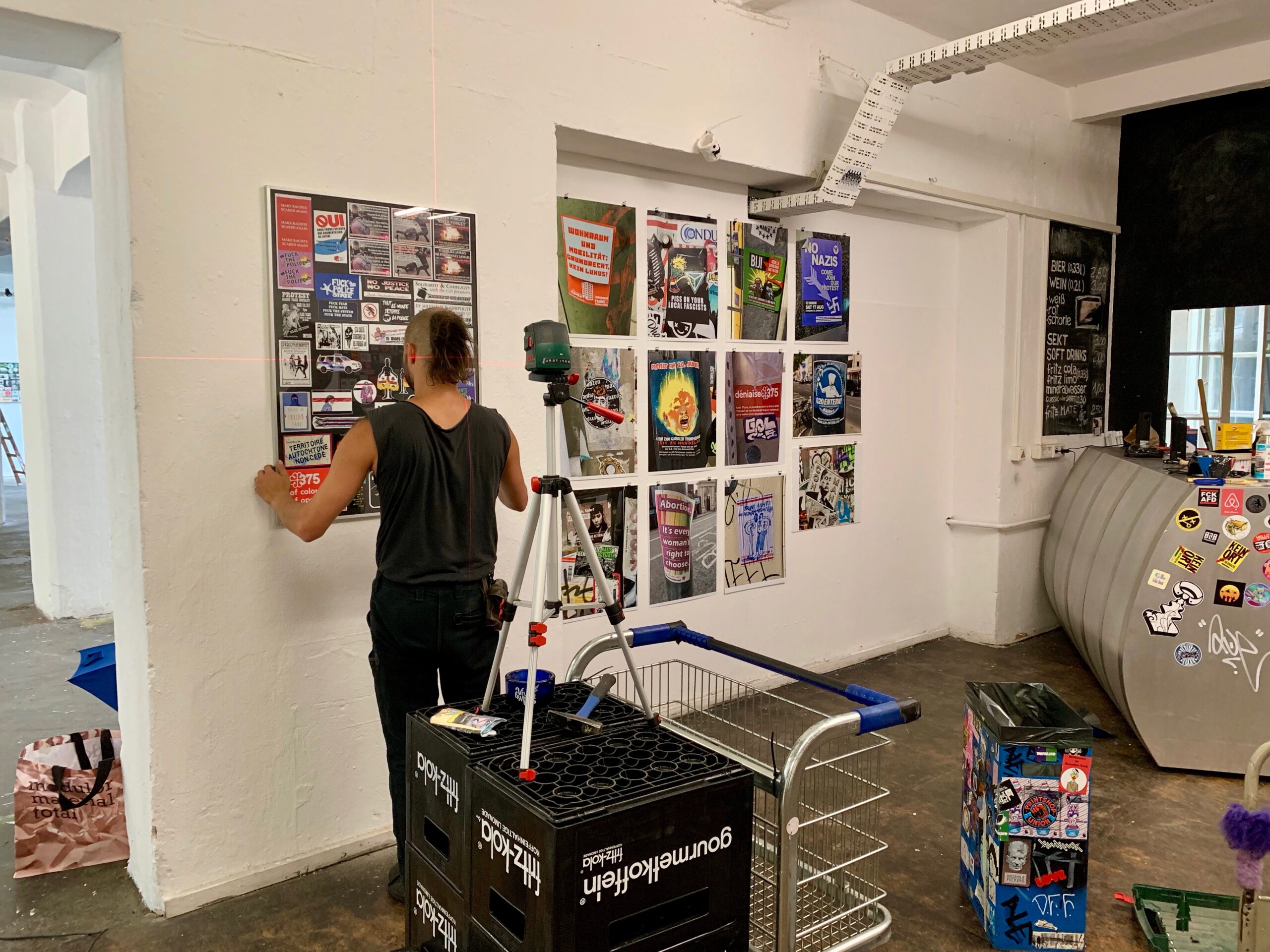
Installation shots
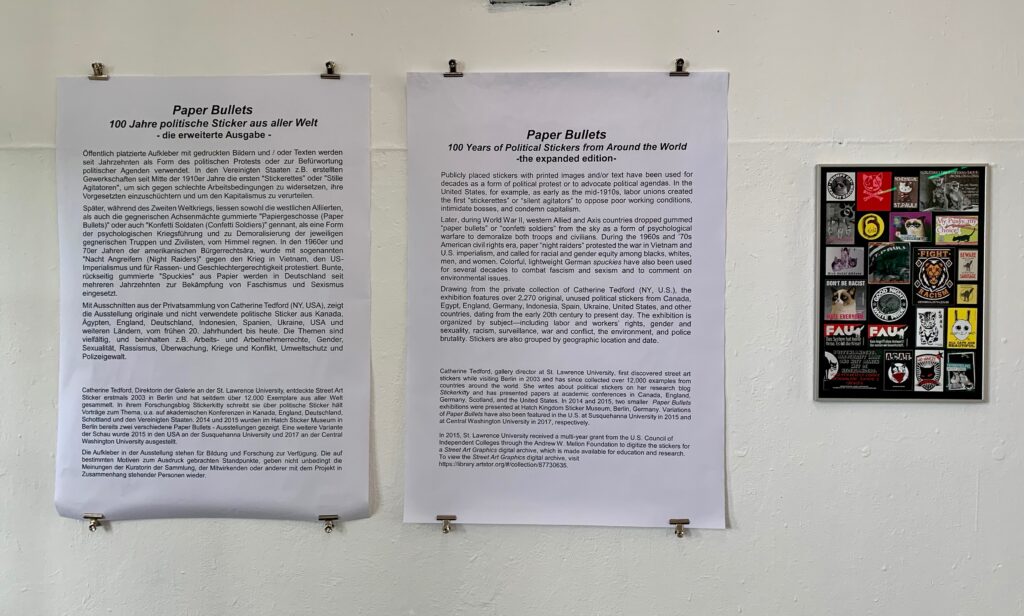
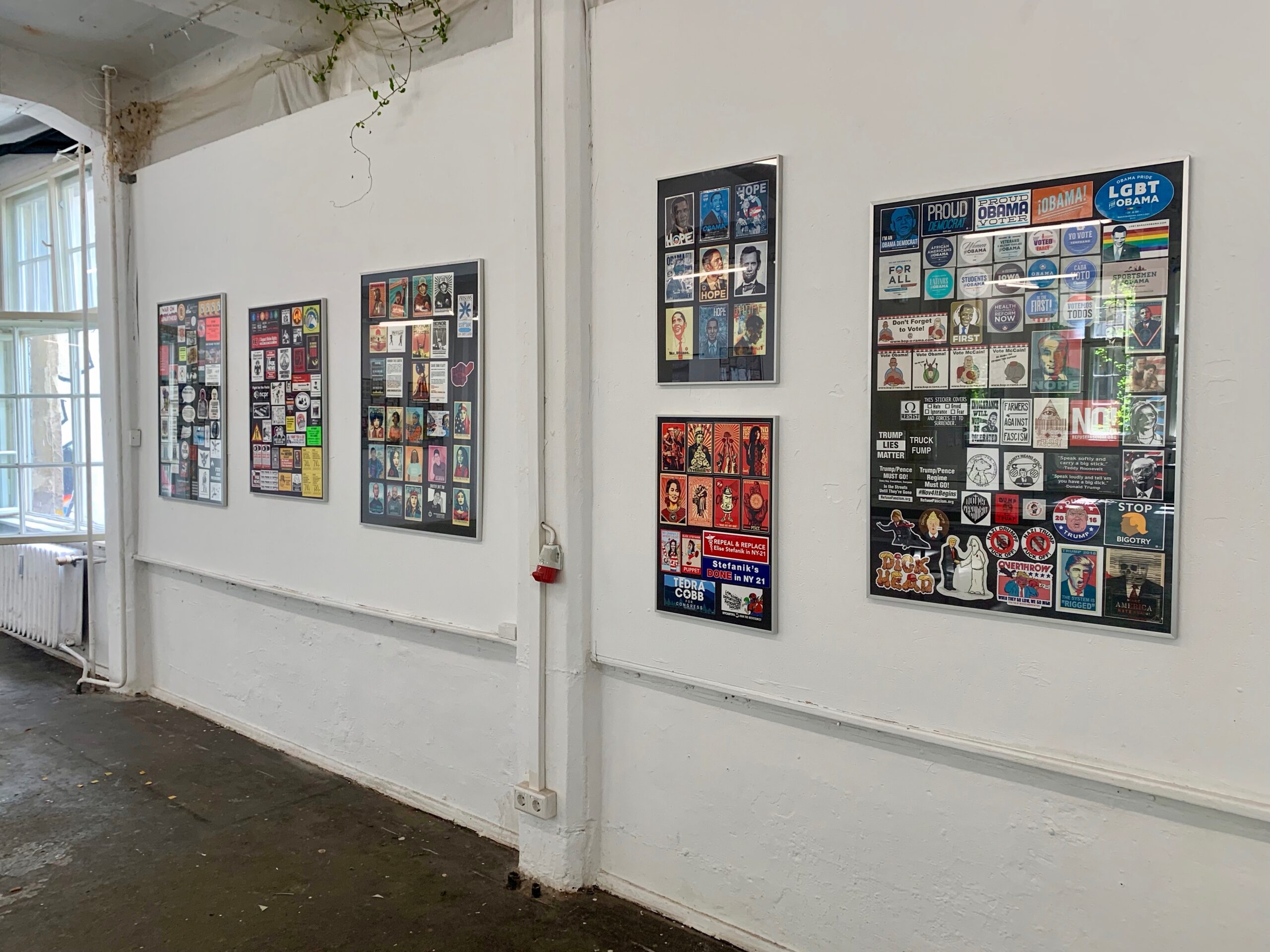
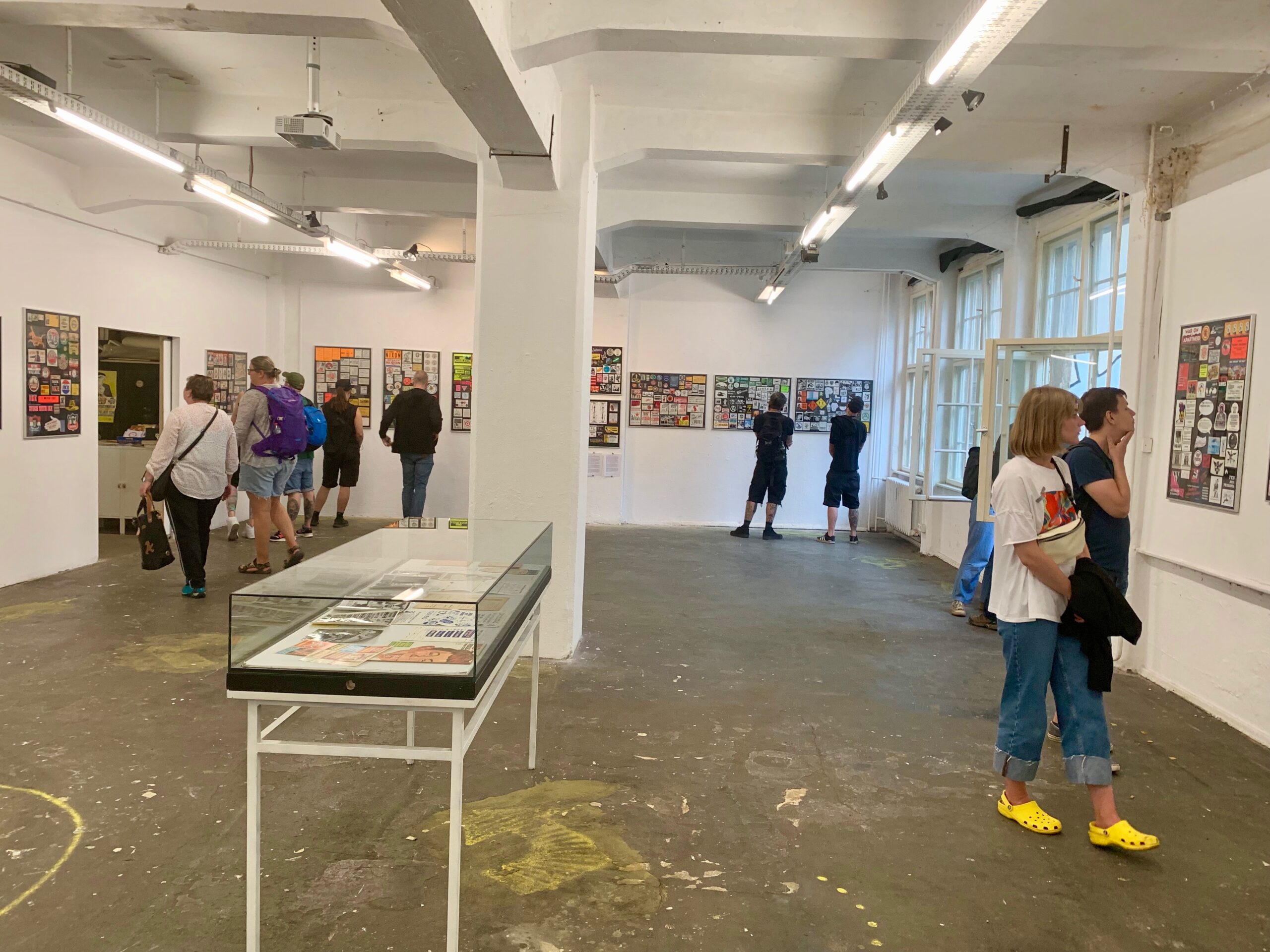
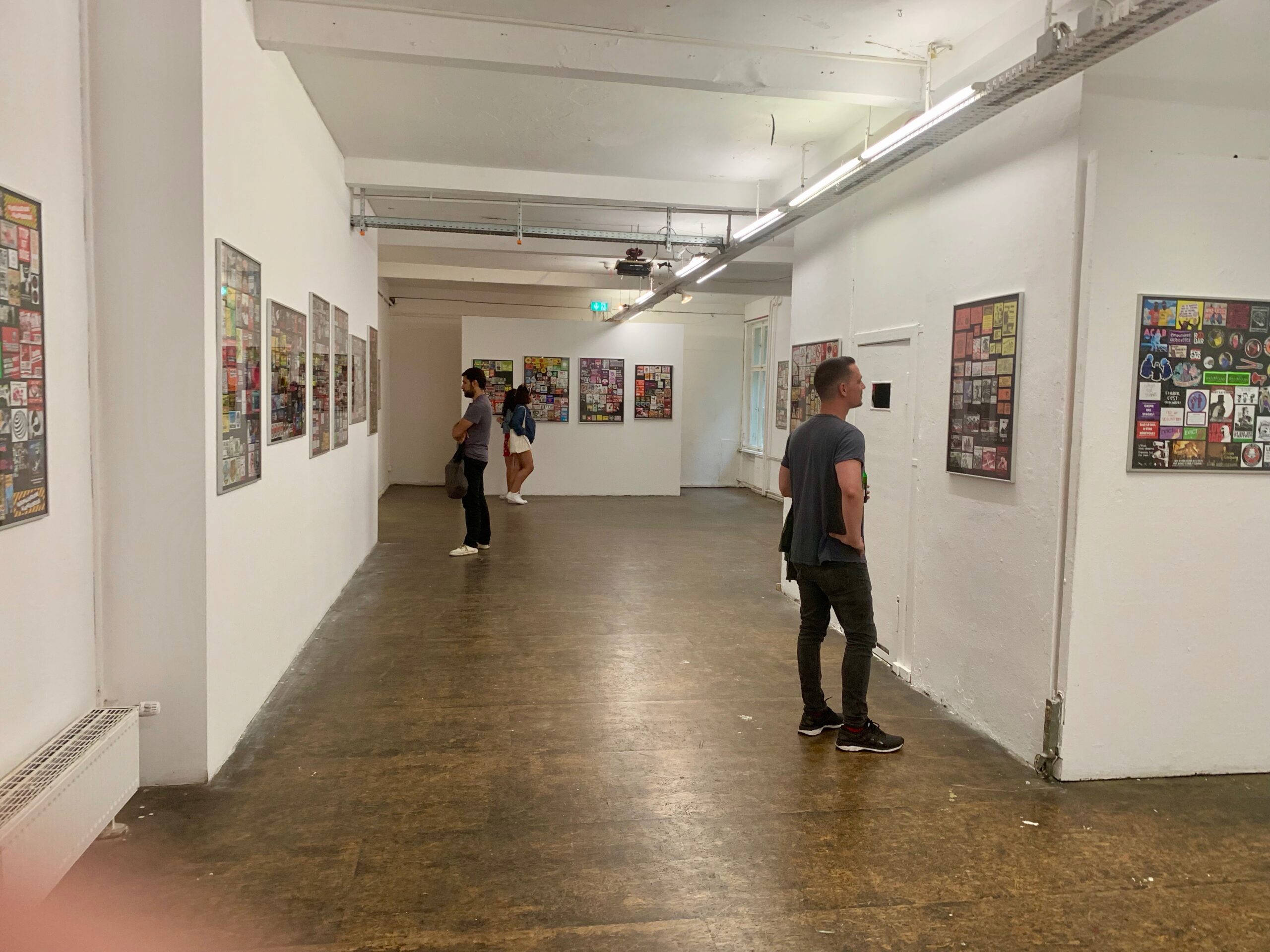
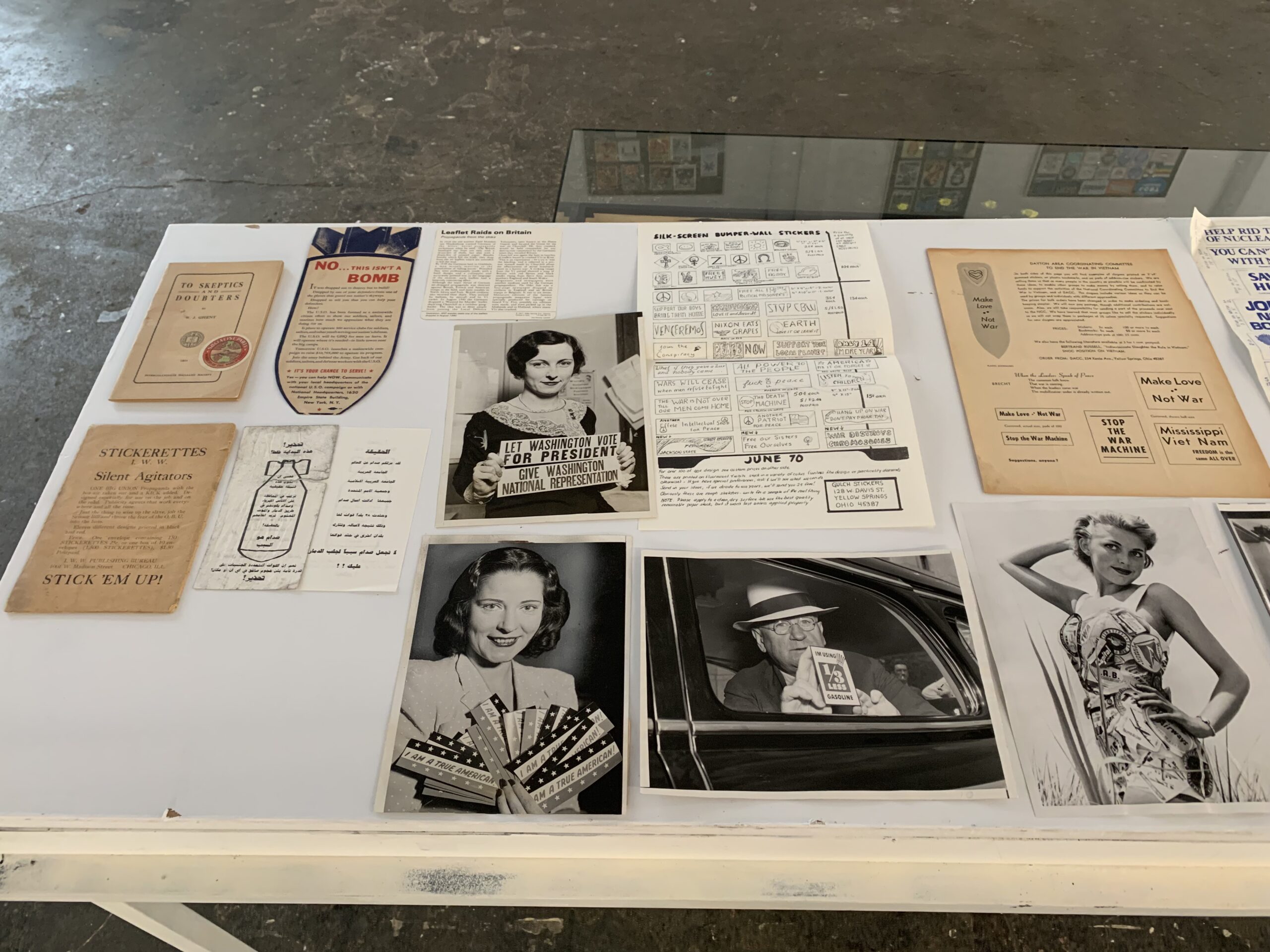
Exhibition announcement
English text panel
Paper Bullets: 100 Years of Political Stickers from Around the World
-the expanded edition-
Publicly placed stickers with printed images and/or text have been used for decades as a form of political protest or to advocate political agendas. In the United States, for example, as early as the mid-1910s, labor unions created the first “stickerettes” or “silent agitators” to oppose poor working conditions, intimidate bosses, and condemn capitalism.
Later, during World War II, western Allied and Axis countries dropped gummed “paper bullets” or “confetti soldiers” from the sky as a form of psychological warfare to demoralize both troops and civilians. During the 1960s and ’70s American civil rights era, paper “night raiders” protested the war in Vietnam and U.S. imperialism, and called for racial and gender equity among blacks, whites, men, and women. Colorful, lightweight German spuckies have also been used for several decades to combat fascism and sexism and to comment on environmental issues.
Drawing from the private collection of Catherine Tedford (US), the exhibition features over 2,270 original, unused political stickers from Canada, Egypt, England, Germany, Indonesia, Spain, Ukraine, United States, and other countries, dating from the early 20th century to present day. The exhibition is organized by subject, including labor and workers’ rights, gender and sexuality, racism, surveillance, war and conflict, the environment, and police brutality. Stickers are also grouped by geographic location and date.
Catherine Tedford, gallery director at St. Lawrence University, first discovered street art stickers while visiting Berlin in 2003 and has since collected over 12,000 examples from countries around the world. She writes about political stickers on her research blog Stickerkitty and has presented papers at academic conferences in Canada, England, Germany, Scotland, and the United States. In 2014 and 2015, two smaller Paper Bullets exhibitions were presented at Hatch Kingdom Sticker Museum, Berlin, Germany. Variations of Paper Bullets have also been featured in the U.S. at Susquehanna University (PA) in 2015 and at Central Washington University (WA) and St. Lawrence University (NY) in 2017.
In 2015, St. Lawrence University received a multi-year grant from the U.S. Council of Independent Colleges through the Andrew W. Mellon Foundation to digitize the stickers for a Street Art Graphics digital archive, which is made available for education and research. To view the digital archive, visit https://library.artstor.org/#/collection/87730635.
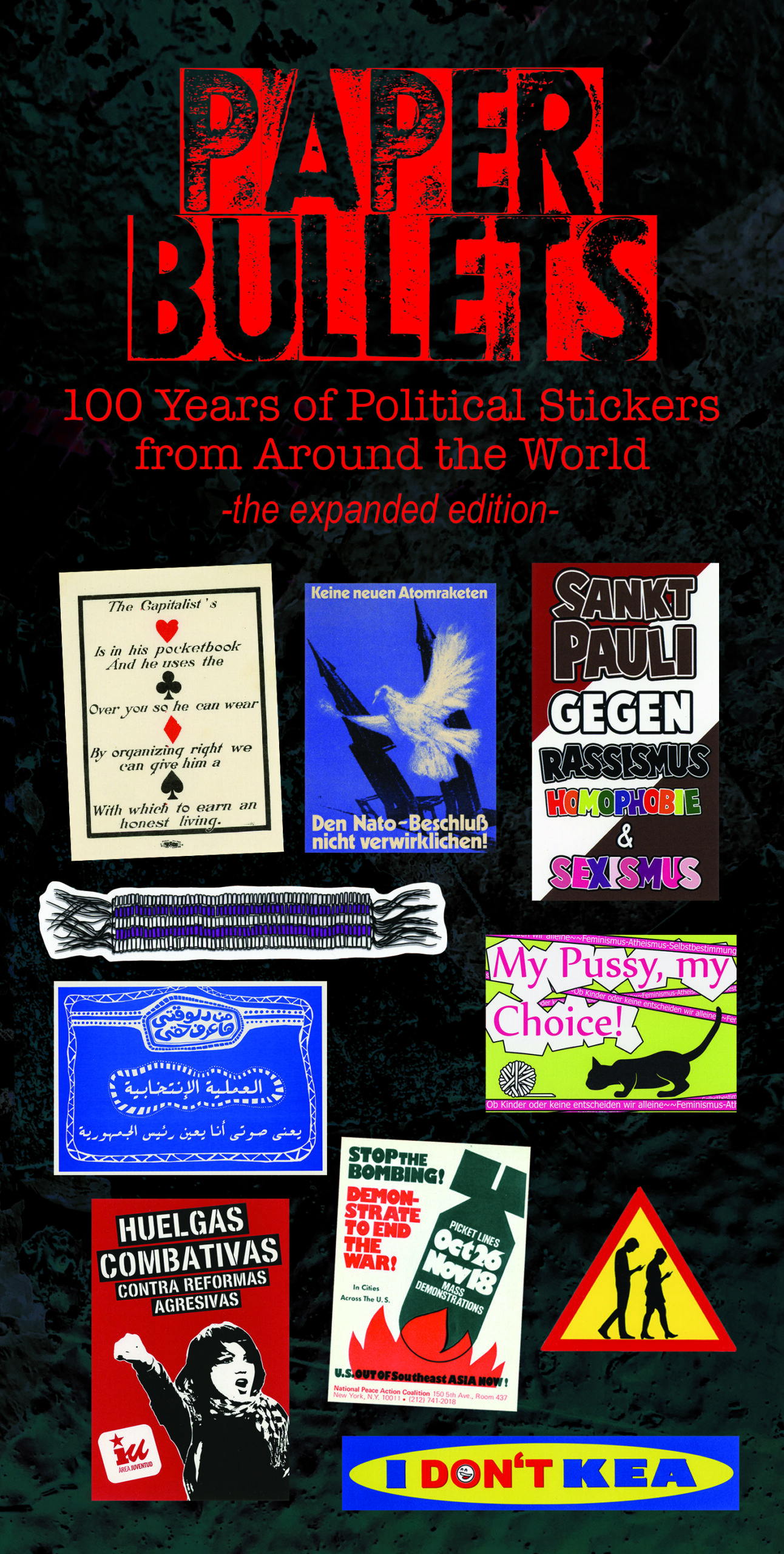
Sticker Kitty- what you are cataloging and preserving will have echos long after the creators are forgotten. Thank you so much for your efforts to memorialize our protests! Your efforts embolden those of us that protest!